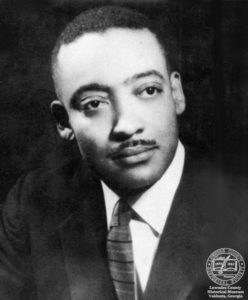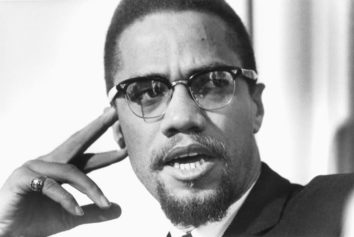
Photo credit: The Valdosta Museum
Born in 1922, Louis E. Lomax was raised by a prominent Valdosta, Georgia, family who pruned him from youth for his eventual greatness. From educating and authoring, to reporting and broadcasting Malcolm X and the Nation of Islam into millions of American households for the very first time, Lomax created a legacy of groundbreaking journalism to become one of the most influential African-American reporters and authors of his time.
Lomax got his start in teaching philosophy at Georgia State College (now Savannah State University); he eventually began climbing the ladder as a reporter for the Baltimore Afro-American and the Chicago American until 1958, after which he began producing documentaries at WNTA-TV in New York.
It was here that Lomax set a precedent as a journalist and activist in his own right.
Avidly involved in the movement, Lomax brought civil rights leader Malcolm X and the Nation of Islam to the attention of Mike Wallace of CBS — host of the program Newsbeat at this time. In early 1959, the network wanted to pursue filming a documentary on the Muslim leader, but Malcolm X refused to be interviewed by any white reporters, including Wallace. His race granting him exclusive access to and trust with the Nation, Lomax was permitted to interview Elijah Muhammad and Malcolm X on camera, only assisted by two white cameramen.
The footage captured on that day became the documentary The Hate That Hate Produced, which was nationally televised in July 1959 as a five-part series on Newsbeat, presented by Wallace and Lomax.
The series was the first time many white people had ever seen or heard of the Nation of Islam and Malcolm X — and it was the first time a Black man appeared on television to report the news.
Now in his prime and a nationally recognized journalist, he hosted the Louis E. Lomax Show on KTTV of Los Angeles from 1964 to 1968, interviewing guests and holding debates on controversial topics of the time, frequently surrounding the differing approaches of activists in achieving racial justice. A strong supporter of unity between races while still advocating the then-rebellious beliefs of Black Power, an unpopular idea with other commentators of the day, Lomax was unafraid of criticism and frequently received it from all sides.
Lomax continued shaking up the journalism world, writing novels, teaching at various universities and challenging standards of racial inequality until his abrupt death in 1970. Killed in a car crash in New Mexico, he left behind his wife Robinette and an unfinished three-volume novel chronicling the history of African-Americans.
He was only 47 years old.
Undaunted by and unafraid to express his own unique concepts of achieving equal rights, Lomax garnered respect and achieved precedence in the civil rights movement, journalism, literature and many a college classroom. Among the many accomplishments he is known for, he will forever be remembered as the first Black reporter to appear on television, and the man who introduced the masses to Malcolm X in that now iconic 1959 interview.


